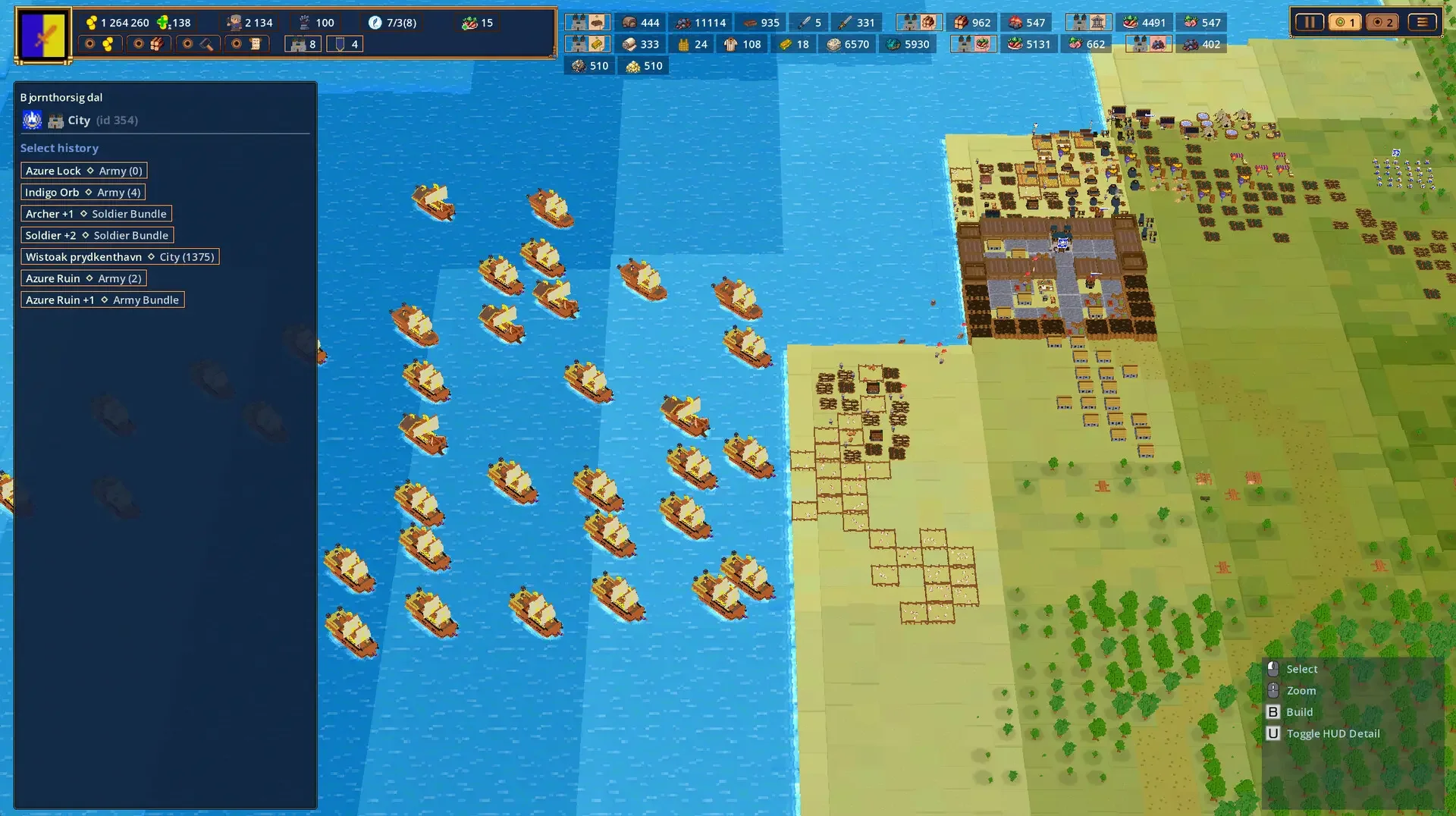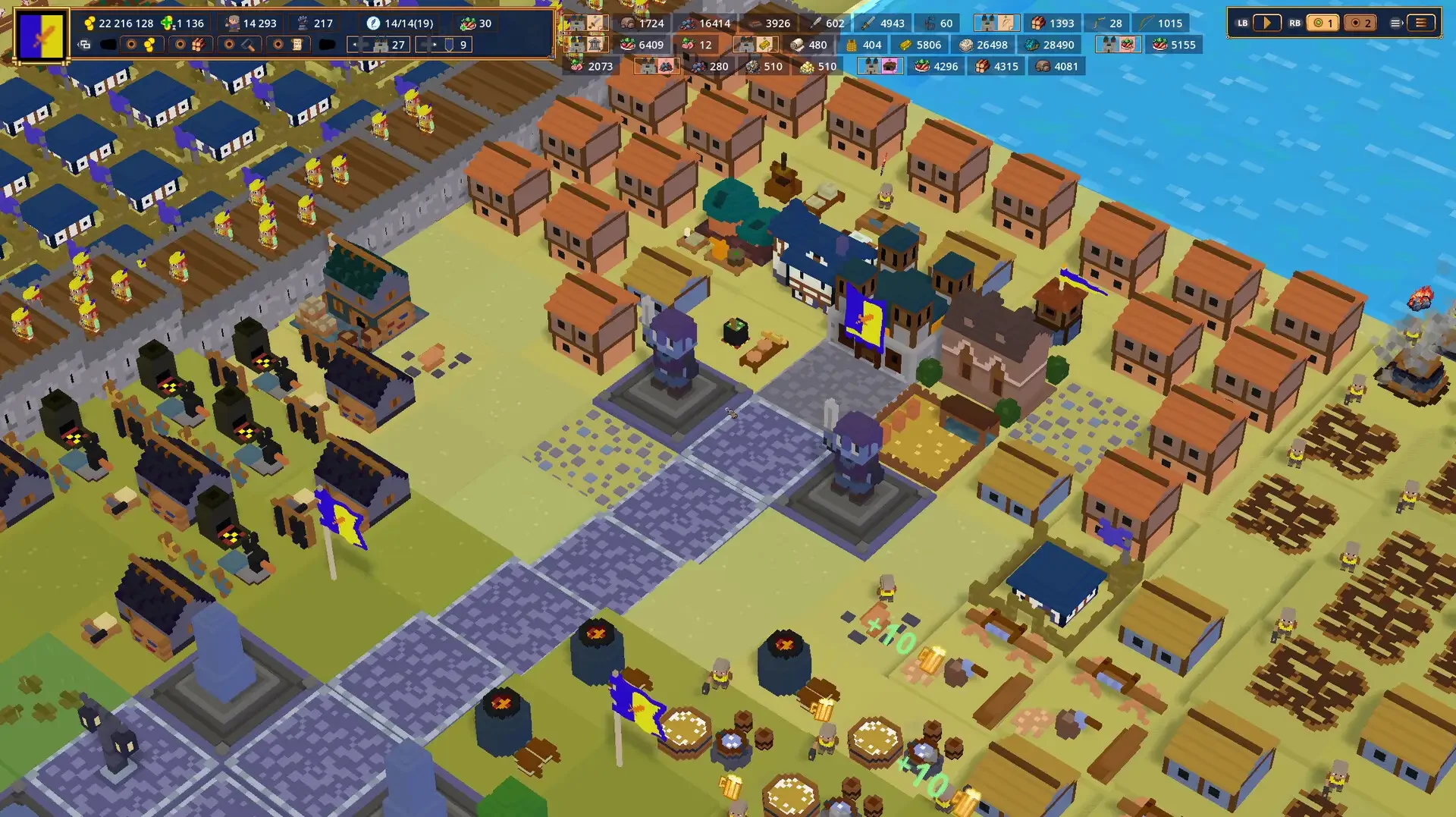DSS 2: War Industry - Tips for Making Your Kingdom Not Suck (Eventually)
So, you've survived the initial panic. Your people aren't starving (mostly), and your army hasn't deserted (yet). Congratulations, you've passed kindergarten. Now it's time to actually build something efficient, maybe even profitable, before you inevitably get curb-stomped by the AI.
These aren't beginner tips; I'm assuming you know how to build a Charcoal Maker and not run out of food on Day 2. This is about optimization, automation, and actually getting to the "War" part of War Industry.
Beyond Basic Survival: Efficiency & Automation
1. Double Down on Local Hubs
I mentioned the Storehouse + Common Hall combo in the beginner guide? Yeah, do that everywhere. Seriously, worker travel time is your biggest enemy. Any significant resource cluster – mines, multiple farms, dense forest – deserves its own local drop-off and chow hall. It costs a bit upfront, but the long-term efficiency gain is massive. Also, build Lumber Mills and Stone Quarries right next to dense patches of trees/stone; they boost yields significantly.
2. Solve the Water Crisis Before It Starts
Water is the silent killer in this game. Farms guzzle it, kitchens need it, smelters demand it. Running out crashes your entire economy. The solution?
Chickens > Farms: Seriously, switch your raw food production to Chicken Coops ASAP. They produce food without using any water. This completely sidesteps the farm-water death spiral.
Beer is Your Friend: Breweries make Beer, which uses less water per unit than direct water in food recipes. Prioritize Beer production in your work tabs.
Build Reservoirs. Lots of Them: Don't skimp. Build a massive buffer of Water Reservoirs. Aim for storage capacity in the hundreds (like 400-500 total capacity across your kingdom). You want so much water banked that fluctuations don't matter anymore.
3. Automate Your Empire with Postal Service
Manually shipping resources between provinces is for chumps. Once you have Logistics built, get a Postal Service building up in your resource-rich provinces (the ones with good mines or forests). Go into its menu and set up export routes. Tell it, "If Wood is above 500, send the excess to Province X". Do this for wood, stone, iron, etc., sending them to provinces that lack those resources. This automates your entire internal supply chain.
4. Train Your Idiots (Worker XP Matters)
You need skilled workers (level 4+) to build the actually good buildings. Don't wait until you need them. Build several Master's Guilds (Schools) early on in each province. Go into the school menu and tell them to train every single profession up to level 4. This creates a pool of baseline-competent workers ready for any job. Prioritize training House Builders and Farmers first, as they seem crucial early.
5. Prioritize City Hall Upgrades
Your secondary provinces start with a pathetic 500-worker population cap. This severely limits their economic potential. As soon as a secondary province is stable, focus on gathering the resources needed to upgrade its City Hall. Lifting that cap is essential for scaling up. You'll likely need 60 servicemen stationed there as part of the requirement, too.
6. Don't Fear the Black Market
Stuck because you need Stone to build a Quarry but have no Stone income? Don't just sit there. Use the Black Market. Buy what you need. Selling excess resources for gold is also viable once you have surpluses. It's a tool; use it to smooth out early-game roadblocks or fix sudden shortages (like buying food if a province starts starving).
Transitioning to War
7. Armies Eat YOUR Food (Plan Accordingly)
This one bites people. Your armies don't magically sustain themselves. They consume food directly from the stockpile of the nearest province. If you park your doomstack next to a small, barely-stable food-producing province, you will starve it out. Be mindful of where your troops are stationed relative to your food production centers.
8. Weapons Don't Make Themselves (Preset Production)
Before you even think about war, go into the "Casting" tab and preset your desired military equipment. Disable the trash like "sharp sticks" and basic padded armor. Set the good stuff (metal armor, decent swords/bows/etc.) to a high priority. This way, as soon as you research the tech and have the resources, your workshops will automatically start churning out the gear you actually want, instead of wasting time on junk.
9. Early Aggression Can Pay Off (Carefully)
If your economy is struggling early, look for a weak neighbor. Check the diplomacy screen or scout them to gauge their military strength. If they look pathetic, declare war, quickly siege and capture one of their cities, and then immediately spend the diplomacy points to declare peace. Boom. You get a whole new province, complete with its resources and (hopefully) population, without a costly, prolonged war. It's a bit gamey, but effective.
10. Specialize Your Provinces
Once automation is running, don't try to make every province do everything. Dedicate some provinces to raw resource extraction (wood, stone, iron), others to mass food production (chickens!), maybe one as your primary military production hub with tons of smithies and armories. Use the Postal Service to ship goods where they're needed. Specialization is efficiency.
DSS 2 has a surprising amount of depth under its somewhat clunky exterior. Master these efficiency tricks, automate your logistics, solve the water problem, and you might just build a kingdom that lasts long enough to actually fight someone. Maybe. No promises.
You might also like
Absolum Beginner’s Guide: How to Survive the First Hour Without Crying
Your Guide to Becoming a Rocket God: The Complete Little Rocket Lab Achievement Guide
Hades 2 Beginner’s Guide with Tips and Tricks for Your First Runs
Pax Dei Is Here, And Its Subscription Plan Is a Fucking Flowchart. I Translated It For You.
CUFFBUST’s Botched Launch and Panic Price Drop Is a Reddit-Meltdown Waiting to Happen

